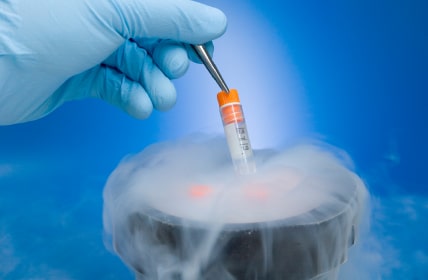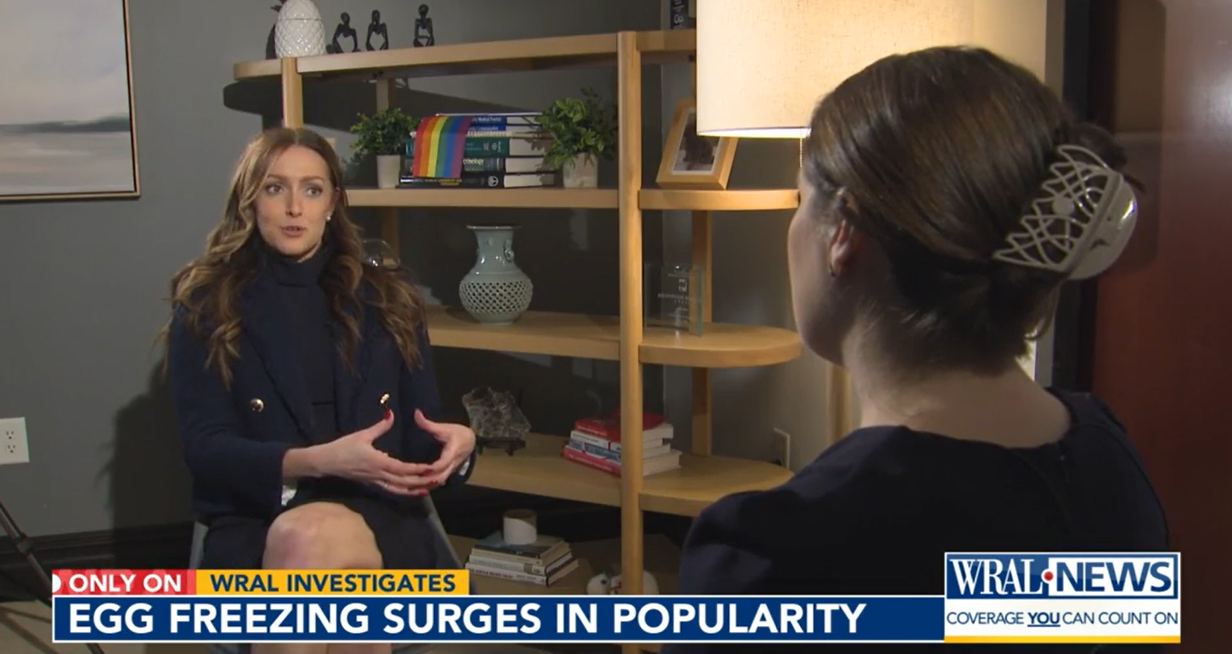1. Frozen Embryo Transfers (FETs) Can Extend the Pregnancy Potential from One Fresh IVF Cycle

Patients that have unused, high-quality blastocyst stage embryos from a fresh (or stimulated) IVF cycle have the option of freezing the embryos for use in subsequent cycles. These cycles are known as Frozen Embryo Transfers or more commonly referred to as FET cycles. A FET cycle involves thawing a previously frozen embryo and transferring it into the woman’s uterus.
2. Success Rates from Frozen Embryo Transfer are nearly identical to that of a Fresh IVF Cycle.
Recent advances in embryo freezing technology, primarily using the vitrication or “fast-freeze” process, have vastly improved the success rates of FET cycles over the past several years. Neither patients nor physicians want to undergo unnecessary treatment, so only high-quality bastocyst stage embryos are selected to freeze, which contributes to the significant improvement in the success rates. Frozen embryo cycles completed with the vitrification freezing technique have pregnancy rates nearly identical to that experienced with a fresh in vitro fertilization (IVF) cycle.
3. FET Cycles are Much Easier to Undergo than Fresh IVF Cycles
Patients starting a frozen embryo transfer cycle will instantly notice the differences between this cycle and a previous fresh IVF cycle.
Less time commitment – Since there is no stimulation of the ovaries to produce eggs in a FET cycle and there is a fraction of the appointments. In fact, there are only three appointments associated with a FET cycle.
- Baseline Check – At the first appointment, there is an intravaginal ultrasound to measure the uterine lining at the start of the cycle.
- Lining Check – A few days prior to the scheduled transfer the uterine lining is checked again. At this appointment, the physician is looking for a thick “fluffy” lining, the perfect place for an embryo to implant and develop into a pregnancy.
- Transfer – On the day of the transfer the frozen embryos are thawed at one of our three IVF Laboratories. The transfer does not require sedation or medication. It is the same procedure a patient would have with a fresh IVF cycle.
More predictable – FET cycles are easily planned out and rarely deviate from the original protocol.
- Changes based on stimulation – Most of the changes with a fresh IVF cycle center around the stimulation phase. Is there over or under stimulation of the ovaries? Should medications be adjusted? Can the cycle proceed with the current progression of egg development? Since stimulation is not required in a FET cycle the cycles, timing is very predictable and easily planned from start to finish.
- Consistent medication regiment – Unlike with the changing dosing associated with stimulated IVF cycles the medication dosing is usually the same throughout a FET cycle. Medication, usually estrogen and progesterone in oil, is used to help prepare and thicken the uterine lining prior to the embryo transfer.
4. FET Cycles are a Fraction of the Cost of a Fresh IVF Cycle
Arguably, one of the best benefits of a FET cycles is the cost. FETs are all around a less invasive option and require far fewer appointments making the cost of treatment more affordable. FET cycle fees are about a third of the cost of a stimulated IVF cycle, and the medications are as little as 10% of the cost of a stimulated IVF cycle. Often time’s patients with insurance coverage for fertility treatment will also have some level of coverage from medications.
Shady Grove Fertility has several financial programs to help reduce the cost of FET cycles even further, including Shared Risk 100% Refund and Multi-Cycle Treatment Discount; both programs include the costs associated with a FET cycle in the program fee.
SGF has also has the Shared Risk 100% Refund Guarantee for FETs. This program offers the same piece of mind thousands of patients have had with the traditional Shared Risk 100% Refund for IVF or Donor Egg Program – a baby born or a 100% refund (some exclusions apply). Patients with remaining embryos from a previous treatment cycle, that meet the eligibility criteria; now have the option to guarantee their success with subsequent FET cycles.
Current patients should contact their financial counselor to learn more about this program.
5. Frozen Embryos Don’t Expire
Whether waiting a few months before starting the next cycle or a couple years between baby number one and number two, you can feel confident that the embryos will remain as strong as the day they were frozen. With vitrification, frozen embryos and eggs are suspended in time allowing patient to take the time they need between cycles. No aging occurs while eggs or embryos are in a vitrified state and are believed to remain the same quality indefinitely. With that said, it is not suggested that patients in their late 30’s or 40’s wait too long. Should later FET cycles not be successful, patients will need to complete another stimulated cycle to obtain additional eggs. While the previously retrieved and frozen eggs are not aging, those still in the ovaries that are yet to be retrieved are. It is important to note, Shady Grove Fertility’s cut off age for treatment is 50 years and 11 months.
If you would like to schedule an appointment with a fertility specialist, please speak with one of our New Patient Liaisons at 877-971-7755.





